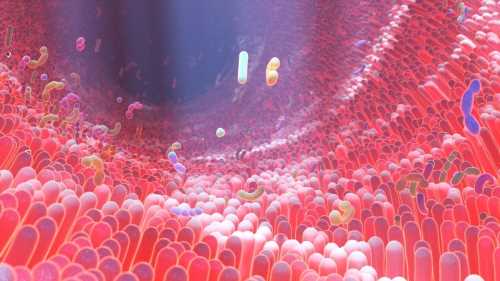In a recent study published in the Frontiers in Microbiology, researchers assessed the impact of diet or macronutrient consumption on the function and structure of gut microbiota.

Background
Shifting ingestive behavior is crucial for animals to adjust to environmental change. Studies have recognized that changes in animal feeding habits lead to gut microbiota structure alterations. However, further research is required to understand the alterations incident in the structure as well as the function of the gut microbiota that occur in response to alterations in nutrient consumption or food types.
About the study
In the present study, researchers explored how animal feeding techniques influence nutrient consumption and further affect the content and digestive function of the gut microbiota.
The study observation site was in the Guanyin Mountain National Natural Reserve in the Qinling Mountains, northwest of Fuping County, Shaanxi Province, China. During a year, this area experiences conventional and four different seasons. According to climate, the seasons are as follows: Spring between March and May, Summer between June and August, Autumn between September and November, and Winter between December and February.
The team compiled feeding information for the four seasonal groupings. For data collection, a month with typical phenological characteristics for each season: March for Spring, June for Summer, October for Autumn, and December for Winter.
All of the 78 golden snub-nosed monkeys in the study group were accustomed to the presence of researchers. The team identified both adult and young individuals in the study cohort. Due to the necessity for quantitative observational data, the natural feeding area of the study animals was restricted. The team provided five kilograms of maize twice daily at 10 am and 3 pm as supplemental nourishment for the group. The feed grounds were evenly strewn with corn kernels.
The team randomly selected one individual per day and observed the subject animal continuously from sunrise to dusk to record data related to its feeding pattern. Furthermore, the type of food, quantity, preset units, and feeding duration were recorded. After the subject had finished eating, food samples were gathered from the leftovers.
Food samples were collected using conventional procedures, their nutritional content was assessed, and their energy content was computed. The lipid, starch, water-soluble carbohydrate (WSC), acid detergent fiber (ADF), neutral detergent fiber (NDF), acid detergent lignin (ADL), ash content of each food, and available protein (AP) were evaluated.
Results
Data related to 96 days of feeding across four months were obtained from the target population. It was discovered that the normal diet of golden snub-nosed monkeys in the wild comprised 24 plant species from 16 families. A total of six plant parts, including branches, buds, seeds, barks, leaves, and stems, were consumed by the subjects.
Throughout the year, wild snub-nosed monkeys eat 33.43% of bark, 3.09% of seed, 1.33% of bud, 3.25% of brunch, 0.17% of the stem, and 58.72% of the leaf. Nonetheless, there were significant variations in the number of plant materials consumed over the four seasons. Herbaceous stems were harvested only in tiny quantities in the Spring. Mostly, seeds were harvested in the Spring and fall. The harvesting of leaves occurred throughout the year. Throughout fall and Winter, when leaves become sparse, especially in Winter, barks, buds, and brunches were the principal sources of nutrition.
The species composition was evaluated to explore seasonal changes in gut microbiota in greater depth. Species annotation revealed that most OTUs could be assigned taxonomically at the phylum and order levels, but assignments reduced dramatically at the genus level.
The top 10 phyla out of 38 phyla recognized dominant phyla, including Bacteroidetes, Firmicutes, Spirochaetes, Proteobacteria, Tenericutes, Planctomycetes, Verrucomicrobia, Epsilonbacteriaeota, Euryarchaeota, and Fibrobacteres comprised 99% of the total abundance ratio. They comprised the majority of the golden snub-nosed monkeys' gut microbiome.
Three hundred ninety-five metabolic pathways were found based on the Kyoto Encyclopedia of Genes and Genomes (KEGG) database's function prediction. Gut microbes were primarily engaged in the metabolism of nucleotides, carbohydrates, glycans and their production, amino acids, terpenoids, lipids, cofactors, polyketides, and vitamins.
Moreover, some annotated functions pertaining to macronutrients exhibited relatively high abundance, including glycolysis/gluconeogenesis, pyruvate metabolism, sucrose and starch metabolism, glycerolipid metabolism, fatty acid synthesis in lipid metabolism, and pentose phosphate pathway in glycerophospholipid metabolism and carbohydrate metabolism.
Conclusion
The study findings showed a considerable seasonal change in the food consumption and nutritional intake of golden snub-nosed monkeys, with three macronutrients being higher in Autumn and Summer and lower in Winter and Spring. Seasonal dietary changes are the primary source of seasonal shifts in gut microbiota. The results indicated that bacteria in the gut compensate for inadequate macronutrient intake through microbial metabolic functions.
- Li, Y. et al. (2023) "Does diet or macronutrients intake drive the structure and function of gut microbiota?", Frontiers in Microbiology, 14. doi: 10.3389/fmicb.2023.1126189. https://www.frontiersin.org/articles/10.3389/fmicb.2023.1126189/full
Posted in: Medical Science News | Medical Research News | Miscellaneous News
Tags: Bacteria, Carbohydrate, Diet, Food, Genes, Gluconeogenesis, Glycans, Glycolysis, Lipids, Metabolism, Microbiology, Microbiome, Nucleotides, Nutrition, Protein, Research, Vitamins

Written by
Bhavana Kunkalikar
Bhavana Kunkalikar is a medical writer based in Goa, India. Her academic background is in Pharmaceutical sciences and she holds a Bachelor's degree in Pharmacy. Her educational background allowed her to foster an interest in anatomical and physiological sciences. Her college project work based on ‘The manifestations and causes of sickle cell anemia’ formed the stepping stone to a life-long fascination with human pathophysiology.
Source: Read Full Article
